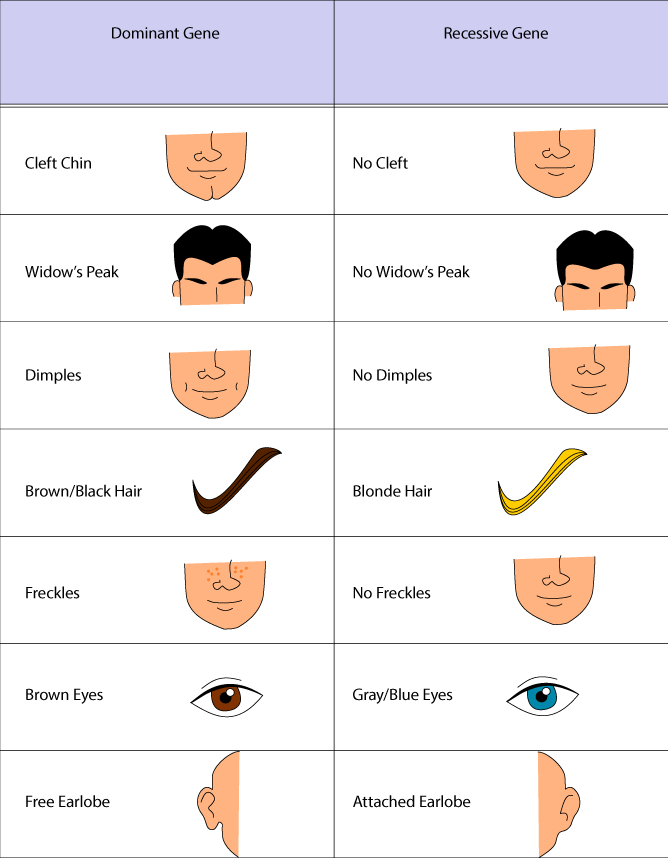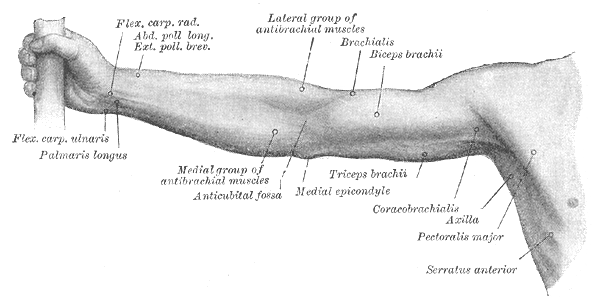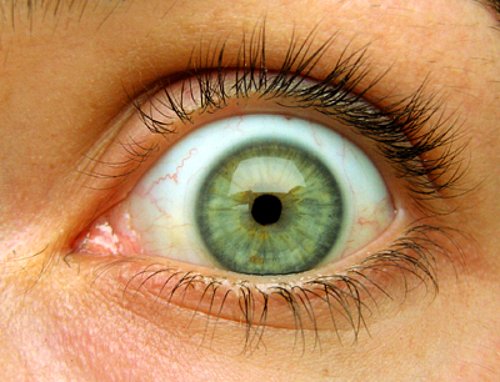It looks like you're using an Ad Blocker.
Please white-list or disable AboveTopSecret.com in your ad-blocking tool.
Thank you.
Some features of ATS will be disabled while you continue to use an ad-blocker.
share:
In the year 1990 an article was published in the Weeklyworldnews newspaper about a French anthropologist named Dr. Henri Noblet who claimed
that we inherited genetic traits from extraterrestrials who interbreed with us 8000 years ago.

Interestingly enough 20 years later after his claim Scientists from different parts of the world discovered that white skin & blue eyes (both recessive traits) originated 8000 years ago near the black sea. My own research over the years has also led me to believe that recessive traits came from extraterrestrials. Lets take a look.


Genes come in versions known as alleles. There are dominant alleles and recessive alleles and ear lobe attachment is thought to be a recessive trait.

Although it’s easy to say that between a tall and a short gene, the tall one is dominant, it’s not necessarily the case studies shown that being tall is infact a recessive trait which is completely determined by genetics.

A study from Massachusetts Institute of Technology concludes:
Palmaris Longus
Palmaris longus is a muscle found in the forearm of many mammals, including humans. It is a slender, flat muscle, and if you held your arm parallel to the ground with your palm facing up, and then decided to allow someone to dissect your forearm, it would appear as a little flat surfboard not too far below the skin, with a tendon passing through your wrist into your hand.
The Palmaris longus performs different functions in various animals. In some animals it pulls back a skin fold to expose a claw. It is more prevalent in animals which use their forelimbs to grab things while climbing, such as orangutans.

Here's where it gets interesting: Palmaris longus serves no apparent function in humans. For this reason it is actually very popular with reconstructive surgeons because they can "harvest" the tissue or the tendon and use it to rebuild other, useful muscles. What is even more interesting is the fact that the muscle is completely or partially absent in around one-sixth of humanity.
Palmaris longus isn't the only "missing" muscle in the human body, there are plenty of others. The Plantaris muscleis in the leg and is absent in about 10% of people. Pyramidalis is in the rectal area and is absent in 20% of people. Levator claviculae is a real no-show, being absent 97% of the time. Occipitalis minor in the head plays the race card, one (somewhat dated) study suggests is always present in indigenous Malays, in 50% of Japanese, only 36% of Europeans, and is nonexistent in some regions of southwestern Africa and in Melanesians.
Palmaris longus has a major advantage over these other muscles, because its presence or absence can be determined without using a scalpel. Hold your hand out palm up, form a fist and then angle your fist toward your face. You'll see either one or two tendons crossing your wrist. If there is only one, then you are missing Palmaris longus.
Ehlers–Danlos syndrome (EDS)

Ehlers–Danlos syndrome (EDS) is an inherited disorder which causes hyperelasticity of the skin & Hypermobility in the bones. People with this condition have skin that is soft, velvety, or stretchy and also a strong tendency to bruising.
Ehlers-Danlos Syndrome is a dominantly inherited, tissue disorder which results from mutations in the COL3A1 gene. Thin translucent skin reveals the subcutaneous venous pattern, and is particularly apparent over the chest and abdomen.

Approximately 50% of those with Ehlers–Danlos syndrome have a missing 'Lingual frenulum' & can touch the end of their nose with their tongue , compared to 8-10% of the population.

Green eyes are the least common (recessive) eye color. In order to have green eyes a person must have a yellow colored stroma. The yellowish stroma appears green due to Rayliegh scattering, the principle that makes the sky blue, blue plus yellow equals green. Rayliegh scattering is the scattering of molecules and and atoms that occurs when light travels through transparent liquids or gasses.

There are two different types of melanin, the pigment that allows skin to tan and that makes brown eyes brown. There is a dark, black melanin and a yellow melanin. An eye without melanin, either black or yellow will be blue. Green eyes are caused by low levels of black melanin and higher levels of the yellow melanin.
Babies with green eyes are born with blue or gray eyes, just like other Caucasian babies. Green eyes do not appear immediately and may take several months to appear. The most dramatic changes to a baby's eye color will typically occur sometime after 6 months of age, but can continue to change for several years.

“Many of us have been influenced by the alien gene pool, some more than others,” Dr. Noblet told reporters in Paris.
“In fact, there are people who are better than 60 percent alien living among us right now. Eye color, foot size, muscle tone, even the way they sleep and think, are dead giveaways to the influence of extraterrestrial ancestry. It is a simple matter to identify these people when you know what features to look for.”
Noblet’s report has been suprisingly well received by most of the human-development scientists around the world. German archaeologist Dr. Richard Graff said there is plenty of evidence to support the French anthropologist’s claims. “There is little doubt the human mind has changed dramatically in the past 8,000 years,” said the expert.
“We also know that the very appearance of humans became much more refined at the same time. Natural evolution is too slow to have caused such sudden changes. It is more likely they were brought about by the introduction of superior characteristics from an extraterrestrial gene pool."
Noblet says the following physical features may indicated a strong extraterrestrial influence in your ancestry:
1. Eye color is usually green or hazel. The eyes are set wide apart in the head.
2. Feet tend to be small and narrow. Toes are apt to be longer than most people feel is normal.
3. Ears are larger than average and set close to the head.
4. Hands and fingers are long and slender. Nails tend to be perfectly formed but fragile.
5. Facial features are usually delicate but sometimes appear to be sharply chiseled. Lips are either fuller than average or unusually thin.
6. Hips are fuller than average to downright wide. In women, breasts are small for build.
7. Hair tends to be red or blonde, but hair color alone does not prove alien ancestry.
8. Body build is small to average. Bones are usually weak.
Interestingly enough 20 years later after his claim Scientists from different parts of the world discovered that white skin & blue eyes (both recessive traits) originated 8000 years ago near the black sea. My own research over the years has also led me to believe that recessive traits came from extraterrestrials. Lets take a look.


Genes come in versions known as alleles. There are dominant alleles and recessive alleles and ear lobe attachment is thought to be a recessive trait.

Tallness
Although it’s easy to say that between a tall and a short gene, the tall one is dominant, it’s not necessarily the case studies shown that being tall is infact a recessive trait which is completely determined by genetics.

A study from Massachusetts Institute of Technology concludes:
“Height is almost completely determined by genetics, but our earlier studies were only able to explain about 10 percent of this genetic influence,” said Dr. Joel Hirschhorn, of Boston Children’s Hospital and the Broad Institute at Massachusetts Institute of Technology, in a press release. With their new study It’s believed that up to 80 percent of a person’s height is determined by genetics."
Other Genetic Traits
Palmaris Longus
Palmaris longus is a muscle found in the forearm of many mammals, including humans. It is a slender, flat muscle, and if you held your arm parallel to the ground with your palm facing up, and then decided to allow someone to dissect your forearm, it would appear as a little flat surfboard not too far below the skin, with a tendon passing through your wrist into your hand.
The Palmaris longus performs different functions in various animals. In some animals it pulls back a skin fold to expose a claw. It is more prevalent in animals which use their forelimbs to grab things while climbing, such as orangutans.

Here's where it gets interesting: Palmaris longus serves no apparent function in humans. For this reason it is actually very popular with reconstructive surgeons because they can "harvest" the tissue or the tendon and use it to rebuild other, useful muscles. What is even more interesting is the fact that the muscle is completely or partially absent in around one-sixth of humanity.
Palmaris longus isn't the only "missing" muscle in the human body, there are plenty of others. The Plantaris muscleis in the leg and is absent in about 10% of people. Pyramidalis is in the rectal area and is absent in 20% of people. Levator claviculae is a real no-show, being absent 97% of the time. Occipitalis minor in the head plays the race card, one (somewhat dated) study suggests is always present in indigenous Malays, in 50% of Japanese, only 36% of Europeans, and is nonexistent in some regions of southwestern Africa and in Melanesians.
Palmaris longus has a major advantage over these other muscles, because its presence or absence can be determined without using a scalpel. Hold your hand out palm up, form a fist and then angle your fist toward your face. You'll see either one or two tendons crossing your wrist. If there is only one, then you are missing Palmaris longus.
Ehlers–Danlos syndrome (EDS)

Ehlers–Danlos syndrome (EDS) is an inherited disorder which causes hyperelasticity of the skin & Hypermobility in the bones. People with this condition have skin that is soft, velvety, or stretchy and also a strong tendency to bruising.
Ehlers-Danlos Syndrome is a dominantly inherited, tissue disorder which results from mutations in the COL3A1 gene. Thin translucent skin reveals the subcutaneous venous pattern, and is particularly apparent over the chest and abdomen.

Approximately 50% of those with Ehlers–Danlos syndrome have a missing 'Lingual frenulum' & can touch the end of their nose with their tongue , compared to 8-10% of the population.

Green eyes are the least common (recessive) eye color. In order to have green eyes a person must have a yellow colored stroma. The yellowish stroma appears green due to Rayliegh scattering, the principle that makes the sky blue, blue plus yellow equals green. Rayliegh scattering is the scattering of molecules and and atoms that occurs when light travels through transparent liquids or gasses.

There are two different types of melanin, the pigment that allows skin to tan and that makes brown eyes brown. There is a dark, black melanin and a yellow melanin. An eye without melanin, either black or yellow will be blue. Green eyes are caused by low levels of black melanin and higher levels of the yellow melanin.
Babies with green eyes are born with blue or gray eyes, just like other Caucasian babies. Green eyes do not appear immediately and may take several months to appear. The most dramatic changes to a baby's eye color will typically occur sometime after 6 months of age, but can continue to change for several years.
edit on 10-5-2016 by ancienthistorian because: (no reason given)
edit on 10-5-2016 by ancienthistorian because:
(no reason given)
edit on 10-5-2016 by ancienthistorian because: (no reason given)
Nice thread. . I seem to be a mixture between the two genes, leaning more to the dominant one..
Star and flag.. good job. .
Star and flag.. good job. .
a reply to: ancienthistorian
what an interesting thread - there is some great information in here (obviously this is more speculation than anything, but still very entertaining).
S & F thank you for sharing!
what an interesting thread - there is some great information in here (obviously this is more speculation than anything, but still very entertaining).
S & F thank you for sharing!
And wouldn't normally make a comment like this.. But tounge girl is hot..
I never see a Lady licking Her nose, I always get the driver coming into My lane because they're either texting or driving while HUA. (Head Up
Arse)...
I'm having a hard time figuring out how that was filmed (Yeah, with a camera for the ATS™ Milton Berle..) Selfie stick?
And Her phone number....
www.youtube.com...
I'll still keep My eyes peeled.. Now if I see them licking all over I'll make a thread..
I'm having a hard time figuring out how that was filmed (Yeah, with a camera for the ATS™ Milton Berle..) Selfie stick?
And Her phone number....
www.youtube.com...
I'll still keep My eyes peeled.. Now if I see them licking all over I'll make a thread..
This is why Jesus said that everyone is born a sinner, simply because everyone now has fallen seraph or fallen watcher DNA in their bloodstream.
@Op. You might want to add high crowns and low crown foreheads. The watchers have low crown foreheads as follows..

@Op. You might want to add high crowns and low crown foreheads. The watchers have low crown foreheads as follows..

Hmmm, I have blue eyes and can touch my nose with my tongue.
I used to think that made me studdly but now I know it makes me an alien.
I used to think that made me studdly but now I know it makes me an alien.
Nordic.. well i am glad i don´t have webbed fingers and my eyes are not far far away..
Very much all others were a match.. but what can i do.. i am nordic ** confused ** ** thought all this was part of evolution and came from adapting to cold climate**
...
Very much all others were a match.. but what can i do.. i am nordic ** confused ** ** thought all this was part of evolution and came from adapting to cold climate**
...
a reply to: ancienthistorian
i don't quite understand how the conclusion is made that just because different people have different dominant genetic traits that they must be partially alien. There are so many other factors to consider that to assume "alien DNA" is the only logical answer is absurd. Evolution occurs in all species- mankind included. As the need for certain physical characteristics decline over long periods of time those physical traits begin to disappear in subsequent offspring until they become rare and sometimes disappear altogether only to pop up in future generations due to remaining strands of dormant DNA. That is why even to this day some people are still born with residual tails, covered with hair, etc.
i don't quite understand how the conclusion is made that just because different people have different dominant genetic traits that they must be partially alien. There are so many other factors to consider that to assume "alien DNA" is the only logical answer is absurd. Evolution occurs in all species- mankind included. As the need for certain physical characteristics decline over long periods of time those physical traits begin to disappear in subsequent offspring until they become rare and sometimes disappear altogether only to pop up in future generations due to remaining strands of dormant DNA. That is why even to this day some people are still born with residual tails, covered with hair, etc.
originally posted by: dollukka
thought all this was part of evolution and came from adapting to cold climate**
Well, I popped out with blue eyes, blonde hair and fair skin, in a predominately dark hair & eyed olive skin gene pool. But ironically enough, I "adapt to cold climates" far less efficiently than any of my family members... I can't handle cold weather!
Which makes wonder if the whole (accepted) theory on how Nordic genetics actually developed is completely flawed.
The Weeklyworldnews what a wonderful source of information and amusement
I see what you did there.
I see what you did there.
a reply to: Subaeruginosa
I kinda like the idea of webbed fingers though.. could make me a championship swimmer
Actually DNA studies show that nordic mtdna is mostly european haplotype H and yDNA most common are haplotypes I ( 25 000 years ago through europe ) and N-M231 ( through siberia about 10 000 years ago ).
I kinda like the idea of webbed fingers though.. could make me a championship swimmer
Actually DNA studies show that nordic mtdna is mostly european haplotype H and yDNA most common are haplotypes I ( 25 000 years ago through europe ) and N-M231 ( through siberia about 10 000 years ago ).
edit on 10-5-2016 by dollukka because: (no reason given)
a reply to: AdmireTheDistance
Yeah pretty much , Natural selection doesn't seem to explain these traits. Scientists are now leaning towards the Idea that these traits came from other species of humans like Neanderthals , However there are allot of different mutations that can cause a trait like the MC1R "ginger" gene which causes both red hair & pale skin for example is not the same gene responsible for light skin across Europe and Asia ect (A111T).
Edit: I forgot to mention that the French Anthropologist also said that weak bones was a trait that came from ETs , People with Ehlers Danlos syndrome also seem to have a condition for weak bones.
Yeah pretty much , Natural selection doesn't seem to explain these traits. Scientists are now leaning towards the Idea that these traits came from other species of humans like Neanderthals , However there are allot of different mutations that can cause a trait like the MC1R "ginger" gene which causes both red hair & pale skin for example is not the same gene responsible for light skin across Europe and Asia ect (A111T).
Edit: I forgot to mention that the French Anthropologist also said that weak bones was a trait that came from ETs , People with Ehlers Danlos syndrome also seem to have a condition for weak bones.
edit on 10-5-2016 by ancienthistorian because: (no reason given)
The bumps on my (frenetic) skull say this theory is in error.
*kidding around, but I'm of the opinion that a genetic influx, or tweak, from some unknown source isn't so impossible... though 8 outta 10 geneticists disagree (should add that stat is pulled from the aethers and that due to my own green, widely spaced eyes and attached lobes, my alien side is trying to hide the truth from my hybrid self) .
*kidding around, but I'm of the opinion that a genetic influx, or tweak, from some unknown source isn't so impossible... though 8 outta 10 geneticists disagree (should add that stat is pulled from the aethers and that due to my own green, widely spaced eyes and attached lobes, my alien side is trying to hide the truth from my hybrid self) .
edit on 5/10/2016 by Baddogma because: add
a reply to: ancienthistorian
Very interesting info.
One thing tho... your chart says that six fingers is dominant...?
Very interesting info.
One thing tho... your chart says that six fingers is dominant...?
new topics
-
My personal experiences and understanding of orbs
Aliens and UFOs: 10 hours ago -
Matt Gaetz ready to go global thermonuclear
US Political Madness: 11 hours ago -
Research paper about plasmoids specifically calls out missing MH370 flight
General Conspiracies: 11 hours ago
top topics
-
Matt Gaetz ready to go global thermonuclear
US Political Madness: 11 hours ago, 14 flags -
Covid....... Again.
Diseases and Pandemics: 17 hours ago, 13 flags -
Smartest Man in the World Tells His Theory About What Happens At Death
Philosophy and Metaphysics: 15 hours ago, 11 flags -
My personal experiences and understanding of orbs
Aliens and UFOs: 10 hours ago, 5 flags -
NJ Drones just another Psy-Op
Dissecting Disinformation: 13 hours ago, 4 flags -
Research paper about plasmoids specifically calls out missing MH370 flight
General Conspiracies: 11 hours ago, 3 flags
active topics
-
Smartest Man in the World Tells His Theory About What Happens At Death
Philosophy and Metaphysics • 32 • : AlroyFarms -
My personal experiences and understanding of orbs
Aliens and UFOs • 10 • : Naftalin -
US Federal Funding set to Expire December 20th. Massive CR on the way.
Mainstream News • 17 • : Skinnerbot -
and14263 New Account Not the Same Old Me
Introductions • 12 • : and14263a -
Matt Gaetz ready to go global thermonuclear
US Political Madness • 12 • : TzarChasm -
Was Biden's Mass clemency and pardons one last cash grab?
US Political Madness • 11 • : network dude -
The Mystery Drones and Government Lies --- Master Thread
Political Conspiracies • 133 • : soulrevival -
Covid....... Again.
Diseases and Pandemics • 26 • : Euronymous2625 -
Defending the need for adherence to Old Testament commandments under the new covenant of Christ
Conspiracies in Religions • 52 • : ADVISOR -
Russias War Against Religion in Ukraine
World War Three • 35 • : Freeborn
